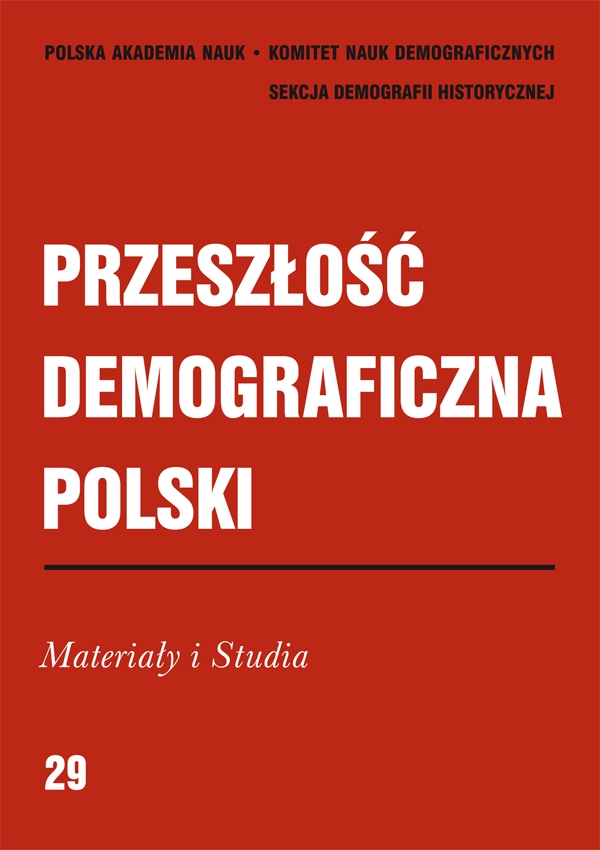Śmierć "ze starości" - o ludziach starych i długowiecznych na podstawie wybranych metryk śląskich z XVIII i pierwszej połowy XIX wieku
Słowa kluczowe:
demografia, starość, długowieczność, księgi metrykalne, Śląsk, Krapkowice, Radzionków, wiek 18., wiek 19.Abstrakt
Death “of old age” — on old and long-lived people on the basis of selected Silesian parish registers from the 18th and the first half of the 19th century
The author analyses death “of old age” in two local communities in Silesia. She investigates the definitions of death “of old age”, the scope of the phenomenon, as well as the demographic, social, occupational and territorial structure of the deceased. Her research is based on parish registers of two Catholic parishes: the register of the Krapkowice parish from the end of the 17th and 18th century, and the register of the Radzionków parish from the first half of the 19th century. The first parish was an urban/rural one, comprised peasants and craftsmen, and the latter — a rural one, with peasant and industrial parishioners. Parish registers were used to retrace the histories of individual people.
In both parishes death “of old age” was stated when the deceased was 60 years old or older. In the Krapkowice community deaths “of old age” constituted 4.6% and in the Radzionków community 9% of all deaths. At the same time, among those who died at the age of 60 or more, deaths “of old age” comprised 19% and 61%, respectively. The analysed group consisted of somewhat more women than men, but among the oldest dead, over 80 years old, it was the other way round. In the Krapkowice parish, among men over 90 years old twice as many lived in the country as in the town. Those who died “of old age” in that parish were most often burghers and craftsmen, as well as peasants — cmetho and life tenants. In the Radzionków parish, apart from wealthier people, there were more poorer ones, even beggars.
Both in the Radzionków and in Krapkowice parishes almost every aged deceased over 84 years old was described as dead “of old age”. There were very few people who lived more than 100 years. In the 18th century longevity in towns was more frequent in women, and in villages — in men. In the 19th century villages there were no significant differences in the number of women and men who died at such an old age.
In both parishes long life aged extreme old age were privileges supported by social status. In the Krapkowice parish, townsmen died “of old age” more often than peasants, which was related to a greater number of wealthier people in Krapkowice, and to longer life. That was also the case with those who died “of old age” in the Krapkowice shelter. In the Radzionków parish in turn, socio-economic changes of the time caused a growth in the number of people with no provisions for old age. Still, also in this parish there were many dead “of old age” in wealthier classes.

